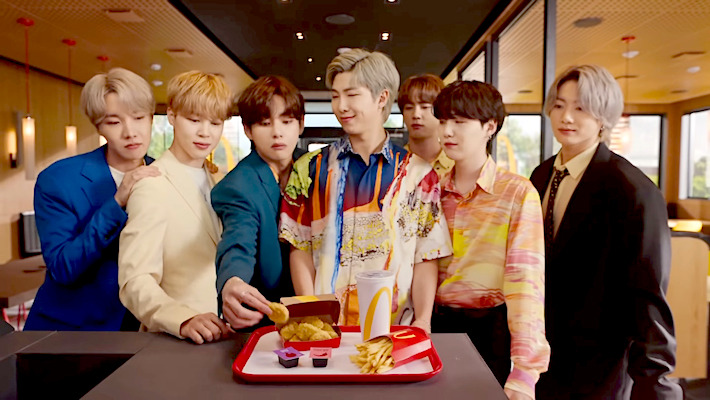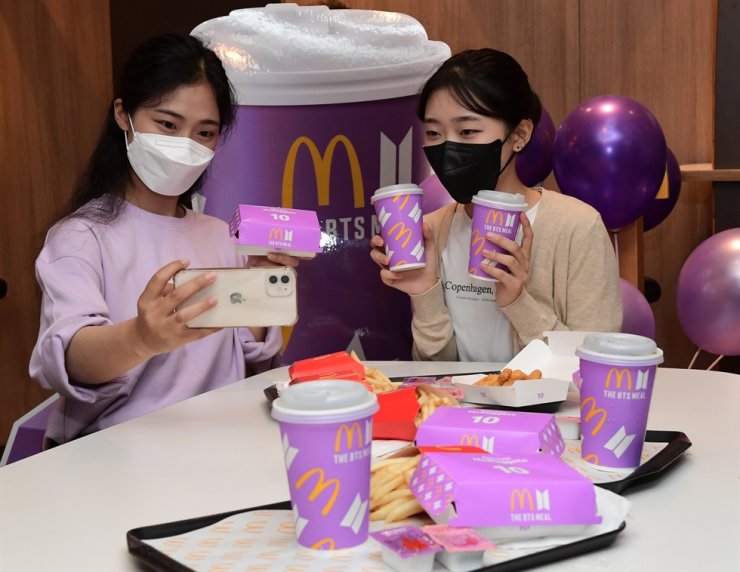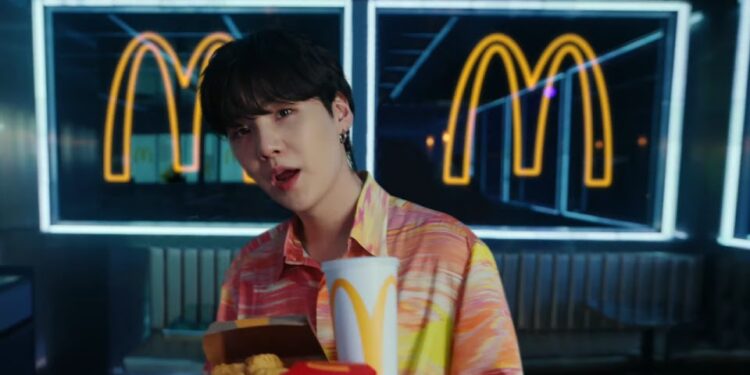McDonald’s and the globally celebrated K-pop group BTS launched a limited-edition “BTS Meal” causing a worldwide frenzy. From New York to Jakarta, lines snaked around McDonald’s outlets, while social media buzzed with the hashtag #BTSMealChallenge.
The promotion combined McDonald’s global influence with BTS’s massive ARMY fanbase, resulting in soaring sales, social media engagement, and unprecedented brand loyalty. Here’s a closer look at how it all happened and the vital lessons marketers can draw from the campaign.
1. Setting the Stage: BTS and McDonald’s Unite
A Global Phenomenon
-
Menu: A standard meal of 10-piece Chicken McNuggets, fries, a drink, and two special sauces (Sweet Chili and Cajun).
-
Packaging: Purple-themed wrappers, cups, and bags adorned with BTS logos—a collectible attraction for fans.
-
Results: McDonald’s reported a 25.9% increase in same-store sales (year-on-year), with chicken nugget sales jumping by 250% in some regions.

The Power of Fandom
-
ARMY’s Influence: BTS’s fandom, known as ARMY, has an estimated 18 million members worldwide. Their enthusiastic support amplified the campaign, turning online chatter into real-world demand.
-
Brand Impact: A prime example of how a deeply loyal fanbase can drive sales and visibility beyond traditional marketing channels.
2. Four Key Strategies That Made It Work
-
Maintaining Authenticity
-
Partnership Fit: McDonald’s stated that they partner with artists who genuinely like their products. This keeps promotions natural rather than forced.
-
Familiar Favorite Orders: Celebrities share their go-to McDonald’s choices, bridging a personal bond with consumers.
-
-
Tailor Content to the Audience
-
Targeting BTS Fans: McDonald’s mirrored the K-pop marketing playbook with teaser trailers, release dates, and exclusive behind-the-scenes glimpses—similar to a new album launch.
-
Pre-Launch Hype: Like K-pop comeback promotions, McDonald’s teased fans with official announcements and special events, tapping into the band’s global hype cycle.
-
-
Respect Local Values and Variations
-
Consistent Core Menu: The core BTS Meal looked similar worldwide, maintaining brand consistency.
-
Country-Level Customization: Local marketing was adapted to regulations and customer culture (e.g., store decorations in South Korea, freebies with orders in India).
-
-
Moving Quickly to Market Demands
-
Photocard Request: Fans wondered aloud if the meal included a photocard—common in K-pop merchandise. While initially unplanned, McDonald’s swiftly added it, boosting excitement.
-
Agility in Marketing: Rapidly responding to consumer feedback can amplify a campaign’s success and keep the momentum high.
-
3. Lessons for Marketers

1. Authentic Collaborations
When brands partner with figures who genuinely appreciate their products, the messaging resonates more deeply with fans. Authenticity cuts through consumer skepticism and heightens trust.
2. Emphasize Emotional Connection
BTS’s music and ARMY’s devotion rest on emotional ties. Tapping into that emotional aspect—via special packaging, social media engagement, or exclusive freebies—encourages brand loyalty.
3. Align Content with Audience Preferences
Carefully crafted teasers, countdowns, and behind-the-scenes looks match well with K-pop culture. Know your audience’s expectations and speak their language.
4. Localize Marketing Efforts
Consistent global messaging is important, but respect each market’s nuances—whether cultural references, special giveaways, or store decorations.
5. React Swiftly to Feedback
Adapting to consumer desires—like photocard requests—fosters goodwill. Being nimble allows you to capitalize on spontaneous brand opportunities.
The BTS Meal campaign demonstrated how powerful strategic collaborations could be—especially when brands partner with influential pop culture icons and engage passionately loyal followers. By crafting tailored content, respecting regional differences, and staying agile to market response, companies can replicate this formula. Ultimately, the #BTSMealChallenge isn’t just about boosting short-term sales; it’s about forging deeper emotional connections with global audiences, turning casual consumers into enthusiastic advocates.













